This post may contain affiliate links. That means if you click and buy, I may receive a small commission. Please read my full disclosure policy for details.
Build Your Own Greenhouse
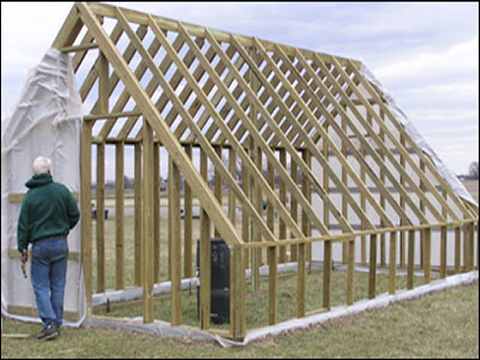
So you think you might build your own greenhouse? Wow! That is an ambitious but surely a worthwhile goal. If you have the skills necessary to do most of the work yourself, this would be a great way to create a cost-effective greenhouse.
Now, a comprehensive guide to greenhouse construction is far beyond the scope of our little greenhouse page. For complete building instructions, get to the library and find a couple of good books on greenhouse construction. Or do a web search for "greenhouse plans".
At the end of this page is a link to some more detailed information you may find helpful.
We believe a greenhouse should be the ultimate goal for any serious hydroponics or traditional soil gardener. Our guide here will hopefully provide some good food for thought as you plan your project...
ASSESS YOUR NEEDS
How big a greenhouse do you need? If all you're going to be doing is starting seedlings to get an early jump on spring, you may just require a small cold frame or tiny temporary-type greenhouse covered with plastic.
A traditional free-standing greenhouse should be a minimum of 8x8 feet. If you are planning on benches and aisles, minimum should be 8x12 or 10x10. If you truly think you will use a greenhouse fully and spend the time to maintain it, go bigger.
One of the most common complaints by greenhouse owners is that they didn't build it big enough!
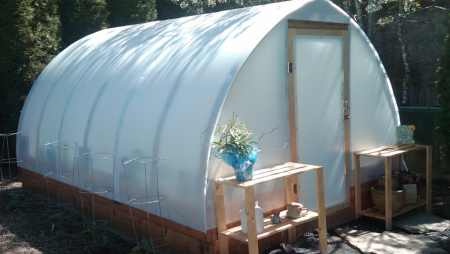
On the other hand, be realistic about the time commitment involved in taking care of a greenhouse. If you really don't have the time, stick with a small, easily managed greenhouse.
As you ponder what size to build, take into account the added costs of a building permit, possibly higher property taxes, heating, electricity, and water.
The smaller the greenhouse, the less these added expenses will be. Consider all these factors when deciding on the size of your greenhouse.
2 KINDS OF GREENHOUSES
Building your own greenhouse? Would you like a freestanding greenhouse, or one attached to your existing home?
The Pros & Cons of Attached Greenhouses:
Advantages:
- Instant access to the plant space from inside your home. You can mist your begonias while cooking dinner!
- Water, heat and electricity more easily accessible.
- Enhanced value of your home. Attached greenhouses and sunrooms are very popular assets, if done properly.
- May provide solar heating to your living space (with proper planning)
Disadvantages:
- Will usually require foundation work and professional construction plans and builder.
- Usually more expensive
- Limits the design and size of the greenhouse.
- Decreases available solar energy. The house itself shades the greenhouse from the sun.
- You might not be able to angle the glazed wall to the south this way.
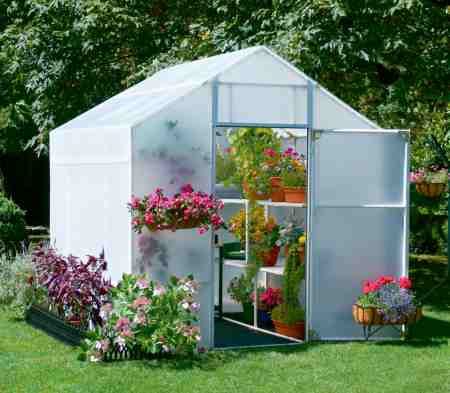
Freestanding Greenhouses:
Advantages:
- More freedom of size and design
- Maximum solar exposure- able to align in proper orientation
- Usually provides more height/headroom
- May provide a distinctly separate and relaxing oasis from hectic home life.
Disadvantages:
- Not as accessible, have to go out to the greenhouse; sometimes in bad weather.
- Water, electricity and heat must be brought to the greenhouse. Wire and pipes cost money!
GREENHOUSE STYLES
Although greenhouses are as individual and unique as the builders who created them, there are certain similarities of roof-line and structure that define their style.
If you want to build your own greenhouse, you'll want to give careful consideration to which style would best complement your property.
Below we describe the most popular greenhouse styles:
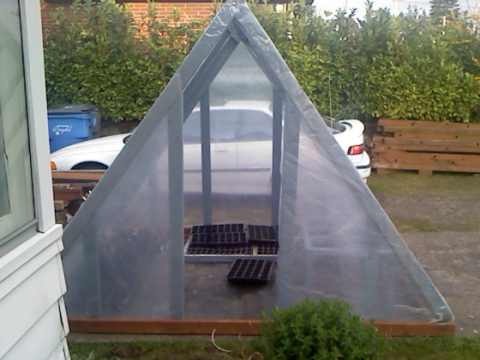
A-FRAME
An A-frame greenhouse is simple in design and recognizable with it's tall, steeply pitched roof. These greenhouses provide a sturdy framework for glass panes. They are often used in very cold climates, as lots of snow does not accumulate on the roof.
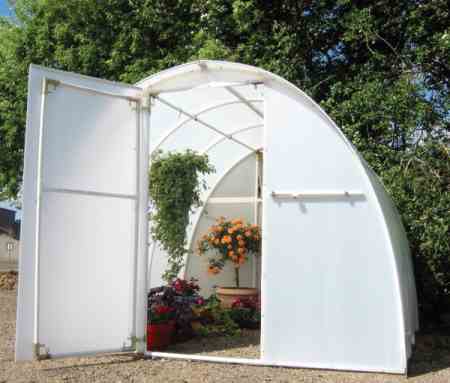
HOOP STYLE (QUONSET)
This is the easiest and fastest construction method if you want to build your own greenhouse. It is also low cost and simple in design. The framework is composed of plastic PVC or electrical conduit pipes which are bent into arches to form the framework.
They are usually covered with flexible plastic sheeting. One disadvantage is hoop greenhouses usually are not very tall and don't have much headroom or storage space. These hoop style greenhouses are an exception.
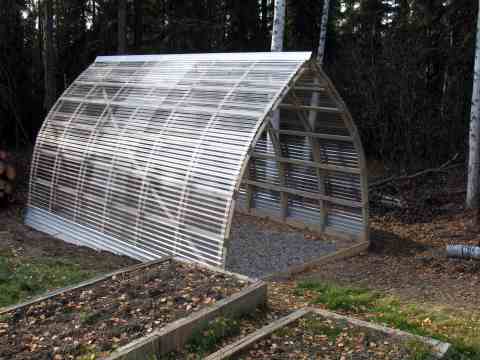
GOTHIC ARCH
This style is similar to the hoop house and is also inexpensive. Instead of a full curve, the hoop rises to a peak. This makes it better suited for snowy climates, and allows for more headroom.
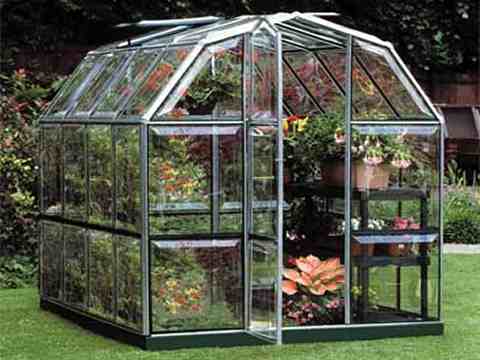
BARN STYLE
Barn
style greenhouses also come to a peak. If you can visualize a
traditional barn structure, this is what the greenhouse looks like. It
may also have a knee wall. Barn greenhouses provide lots of headroom and
plenty of surface for vents.
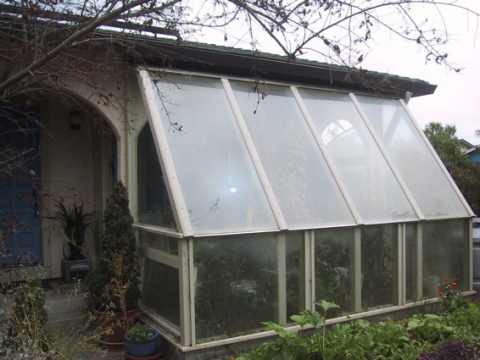
ATTACHED SINGLE-SLOPE
Greenhouses which are attached to a dwelling are essentially one half of a freestanding greenhouse. Hence you end up with one single sloping surface for glazing.
Does a greenhouse kit make more sense?
After you add up all the expenses of building your own greenhouse, don't forget to add skilled labor and professional fees for all portions of the project you are not capable of yourself.
You may find that the bottom line cost is pretty close to a complete, simple to erect greenhouse kit.
Check out kit options here.
Update! Our long-promised and eagerly-awaited DIY Greenhouse e-book is ready!
Simon’s Super Simple
On-The-Grid, Off-The-Grid
Hydroponic/Aquaponic
Survival Greenhouse
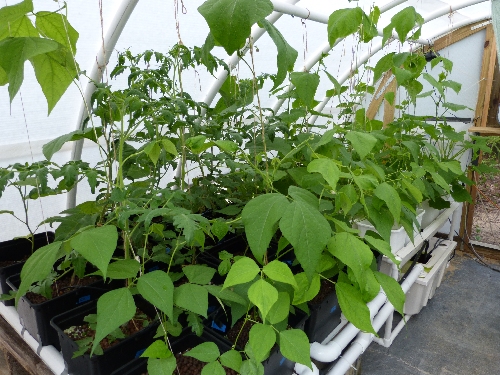 |
Simply awesome! |
SITE SELECTION

BUILD YOUR OWN GREENHOUSE
- You should place your greenhouse where it gets the most sunlight.
Situate it so that the longest glazed side faces the south. Sunlight all
day is optimal; however 6-8 hours per day is fine. Less than 6 hours,
you'll need supplemental lighting. - Morning sunlight is preferable to evening, as
it kickstarts your plants early in the day. If for whatever reason you
cannot face the south, east is the next best choice. Facing west or
north does not make for a very solar efficient greenhouse, so why
bother? - Think about the prevailing winds in your area. Is there a bank of
trees to the north that might serve as a good shelter from winter winds?
That would be ideal, but don't forget to space it at least 20-30 feet
from the trees. - Also consider the ground itself. How good is the drainage? You don't
want water flowing downhill into your greenhouse! It is also better to
have a flat rather than sloped greenhouse floor. - If necessary, build it above grade so rain will drain away from the
site. Plan on a few inches for the greenhouse flooring material (like
gravel) so it's raised above ground level. Don't build on soft sandy or
wet boggy soil.
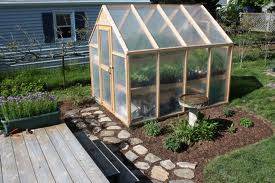
You want to build your own greenhouse close to the garden, if you have a traditional soil-based plot. Also think about how far you will have to walk to get to the greenhouse from your home. Most folks place their greenhouse close by for easy accessibility.
Interested in more specifics on greenhouse construction? Continue on to our DIY Greenhouse page.
RETURN TO HYDROPONIC GREENHOUSE
RETURN FROM BUILD YOUR OWN GREENHOUSE TO HOME PAGE
New! Comments
Have your say about what you just read! Leave me a comment in the box below.

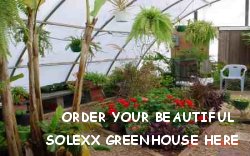
Reply